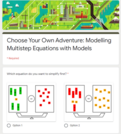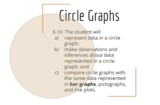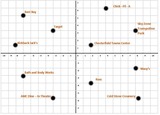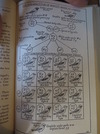
This short and sweet 5E lesson helps students explain the role of gravity in the formation of the solar system and in orbital motion (6.2c).
- Subject:
- Earth and Space Systems
- Material Type:
- Lesson
- Author:
- Melissa Bills
- Date Added:
- 03/11/2021

This short and sweet 5E lesson helps students explain the role of gravity in the formation of the solar system and in orbital motion (6.2c).

Students research modern DNA discoveries provided by the teacher as well as student selected discoveries. After summarizing each discovery, students reflect on the nature of science and identify and explain which NOS tenets are demonstrated in the DNA discoveries.

Students will participate in a 5E lesson. To ENGAGE, students will connect their understanding of similarities between parent and offspring to the fundamental molecule of life: DNA. To EXPLORE, students will participate in interactives to observe, analyze and summarize how genes are used to create proteins and traits. In the EXPLAIN section, students will take notes on DNA replication and the Central Dogma. To ELABORATE on their understanding of DNA, students will participate in a protein synthesis race (game) to practice transcription and translation. Formative evaluations of students's ability to explain the process of protein synthesis include (1) a protein synthesis and codon practice sheet, (2) a labeling activity, and (3) making a recording that models and explain the process. As an extension, students can apply their understanding of mRNA to explain how the Pfizer and Moderna COVID-19 vaccines work. Finally, int summative EVALUATE, students model replication, transcription, and translation as they build an organism!

Students will be given a division model, mathematical sentence, or practical problem to solve. After solving a problem, they will enter their answer into the Google Form and it will tell them if they got the correct solution. If they answered incorrectly, they will need to try again to move on. If they answer correctly, they choose which problem they want to solve next. This activity is designed so that students will complete 5 problems.

Students solve multistep equations (with variables on only one side). Students choose between two models/equations at each of six points in this Google Form activity.

In this lesson students will explore circle graphs. See teacher notes for more details in the notes section of the slides. Please be sure to make a copy and delete notes before assigning to students.

This is a Desmos activity to assess the knowledge students have of the slope of parallel and perpendicular lines and angle relationships formed when parallel lines are cut by a transversal.

Students will participate in a 5E lesson on classification. To ENGAGE, students will think about common vs scientific names and interpret relatedness between four species. To EXPLORE, students will watch a clip of their choice from Our Planet and document organisms' defining characteristics. Students create a hierarchy to predict the relatedness of the species. To then learn about classification systems, students will participate in the EXPLAIN activities. Three videos and guided notes are available for students to document their learning. An EVALUATIVE formative assignment Candy Cladogram Drag and Drop is available for students to practice their understanding of phylogenetics. Then, students will ELABORATE on their knowledge by researching the scientific names of the organisms they observed in the Our Planet clip (explore section). Students will evaluate the accuracy of their orginial hierarchy and explain how scientific developments have impacted classification. Additional cladograms are included for students to interpret.

This is an originally created Desmos activity. In this activity, students interact with different screens to perform a combination of transformations. Students will check their work and, upon revealing the answer, will not be able to change their answers. After checking their work, students will justify their creations.

Students evaluate functions to make a connection to compositions of functions. Students then practice finding compositions of functions. Students end the activity evaluating compositions of functions both algebraically and graphically with a challenge that includes multiple compositions.

In this activity, students will discover how to determine the distance between two points on the same horizontal or vertical line.

Using given congruent triangle statements, students will create congruent triangles and find the lengths of all the sides.

It is suggested that this activity be used once students have a deep understanding of parallel and perpendicular lines. Students will be given the equation of a line in various forms and based on that information, must drag points on a graph to create parallel and perpendicular lines. Initially students will not be shown the graph of the original line, but can obtain that hint if necessary. Once students submit their solutions on the graph, they can reveal the answer, but will no longer be able to adjust their work. This could be used as an assessment, especially during distance learning.

In this Desmos activity, students will use their knowledge of parallelograms to correctly find the location of a 4th vertex.

Evaluate student ability to complete and analyze a dihybrid cross using a black rhino case study.

Students practice identifying the types of variation from equations and solving problems of different types of variation.

This is a Desmos activity to explore domain and range of continuous functions. Students do not need prior knowledge of domain and range; this is an exploratory instructional activity.

Students will be introduced to the Empirical Rule for normal distributions and practice using it to answer questions.

This 5E lesson helps students understand that energy can be transformed from solar energy into mechanical, electrical, and chemical.

Students evaluate functions with function notation both algebraically and graphically.